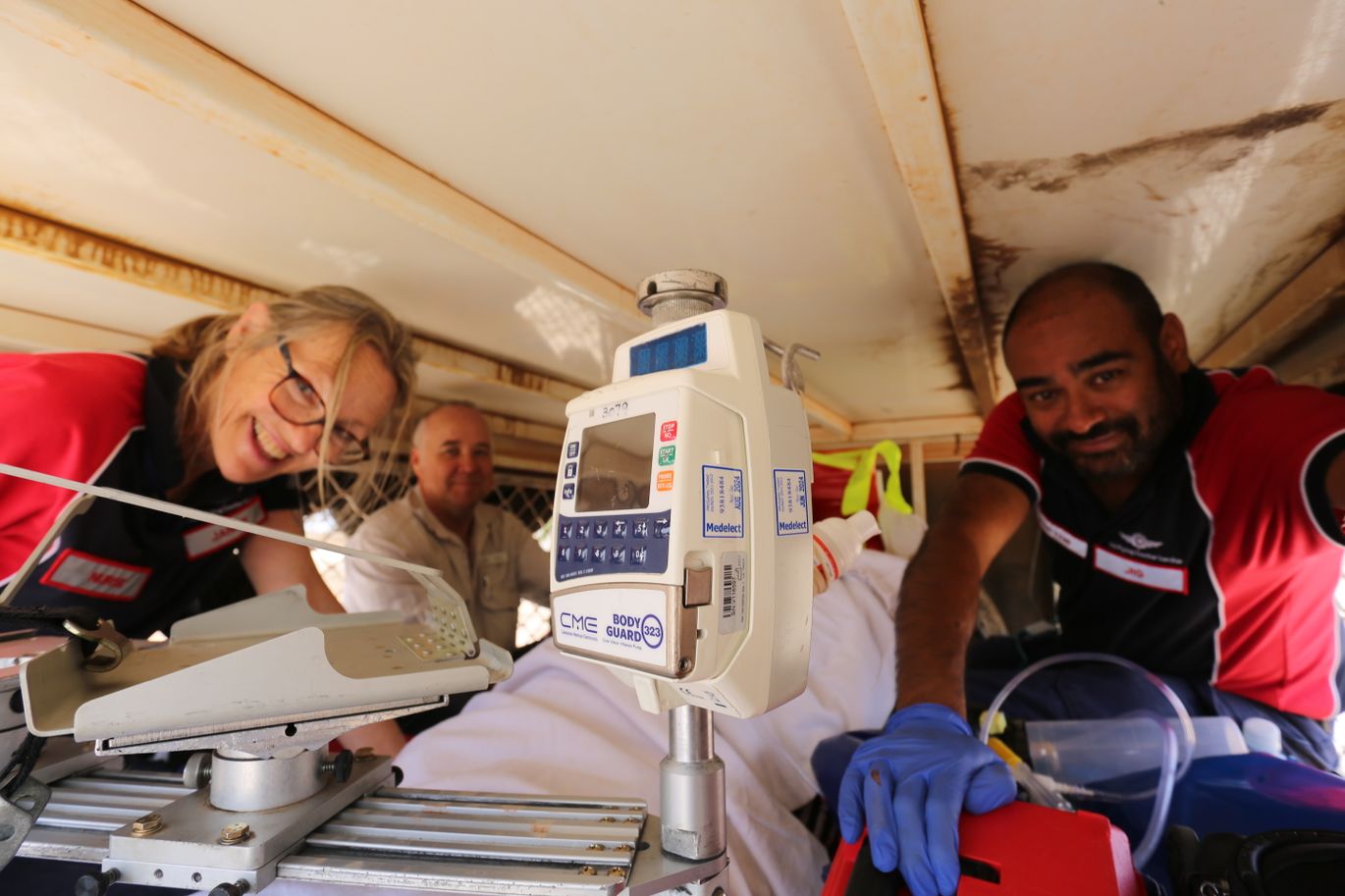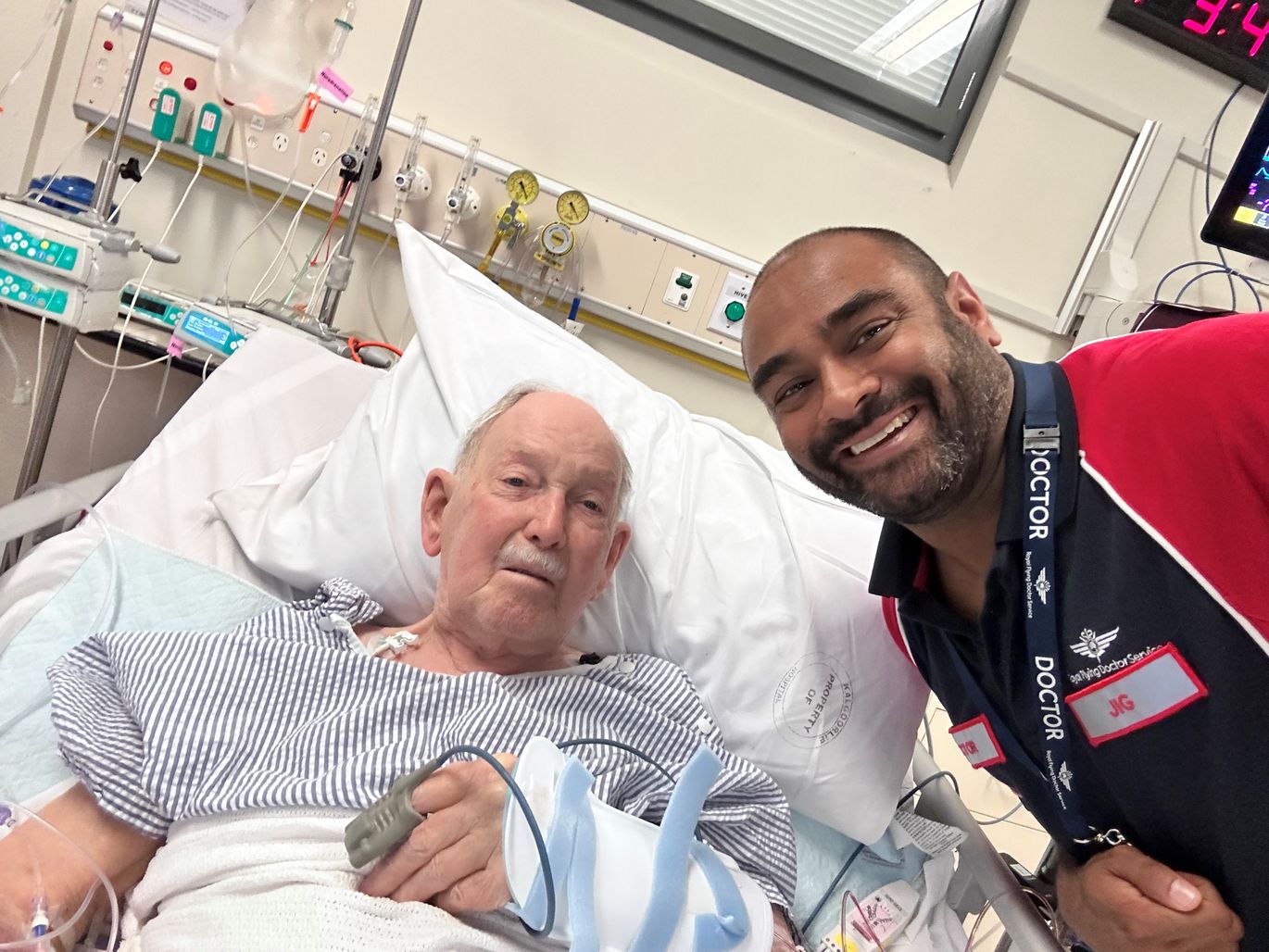
Graphic: Dr Jig smiling in front of a PC-12.
Doctor Jig is accustomed to working inside the tight space of an RFDS aircraft, but one retrieval saw him treating an unwell passenger within the confines of the iconic Indian Pacific train.
Eighty-six-year-old Terry Woodroffe was excited to board the Indian Pacific in Perth, after his original booking on the cross-country train was cancelled during the height of the pandemic. But within hours of leaving Perth, he became gravely ill. The train made an emergency stop at the remote Rawlinna station, 380 kilometres east of Kalgoorlie, so that the RFDS could transport Terry to hospital.
An off-duty anaesthetist from Adelaide happened to be on board the train and took charge until the RFDS arrived. He and Jig spoke by phone, with the anaesthetist warning he didn’t think Terry was going to survive because he was struggling to breathe.
The Pilatus PC-12 landed about half a kilometre from the station, and Jig, Retrieval Nurse Janice and Line Pilot Lance were driven in a ute to the train. Jig had to think on his feet.
“I had to identify what level of care was appropriate, and getting hold of the passenger’s next of kin was a challenge. Then we had to navigate how to get the patient off the train, onto the ute and onto the aircraft,” he said.
The Indian Pacific staff knew removing the patient through a narrow door was going to be difficult, so before the RFDS crew had landed, they had already begun removing panels off the train.
“It only created a couple of inches of space either side, but it was still useful to have that extra space,” Jig said.
There’s no right or wrong way to manage the situation – it’s about listening. The train manager has more experience in moving unwell patients off a train than any of my team had, so we all bounced ideas off each other.
The train staff also supplied a roll-up mattress to help slide Terry about 10 metres down the narrow corridor from his cabin to the train door. He was then carried down a temporary ramp, lifted onto a stretcher and then the ute, to be driven to the aircraft.
“It required lots of effort, but we got there,” Jig said. “We’re used to working with a small team of three – doctor, nurse, pilot – but there was about 10 people involved in getting Terry off the train and onto the aircraft.”
During the flight to Kalgoorlie, Terry received emergency treatment and by the time the plane landed his condition had improved. The next day Jig kindly stopped by the hospital to check on Terry’s progress.
“I was pleasantly surprised to be able to see him in the high dependency unit, completely alert. We had a very pleasant conversation,” Jig said.
Terry was treated for pneumonia, and after staying with family in Perth for several months, he has now returned home to Brisbane in good health.
It’s a great feeling to know that we are making a genuine difference. The alternative for Terry would have been a 12-hour road trip by ambulance, and I am fairly convinced that he would not have survived that.



